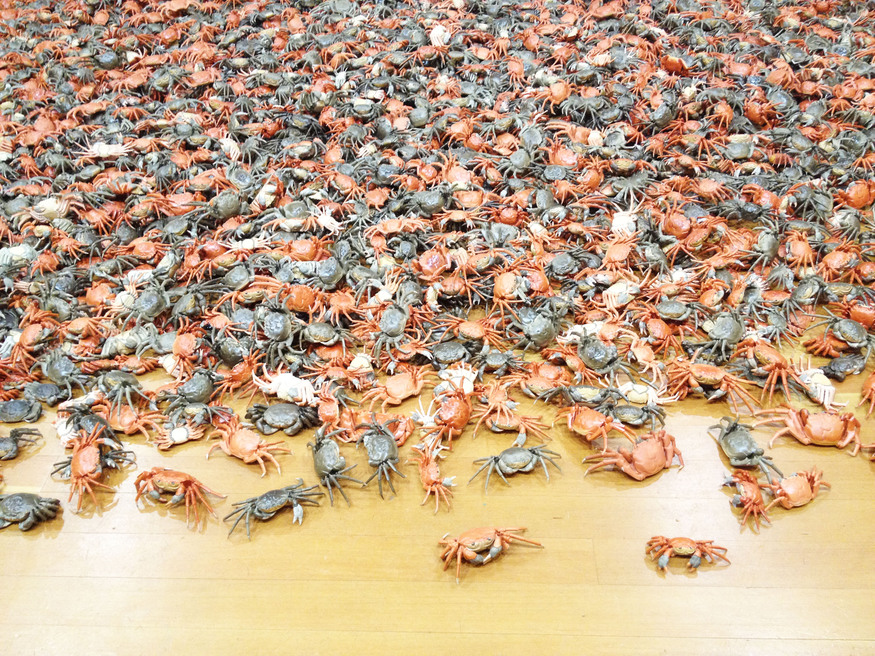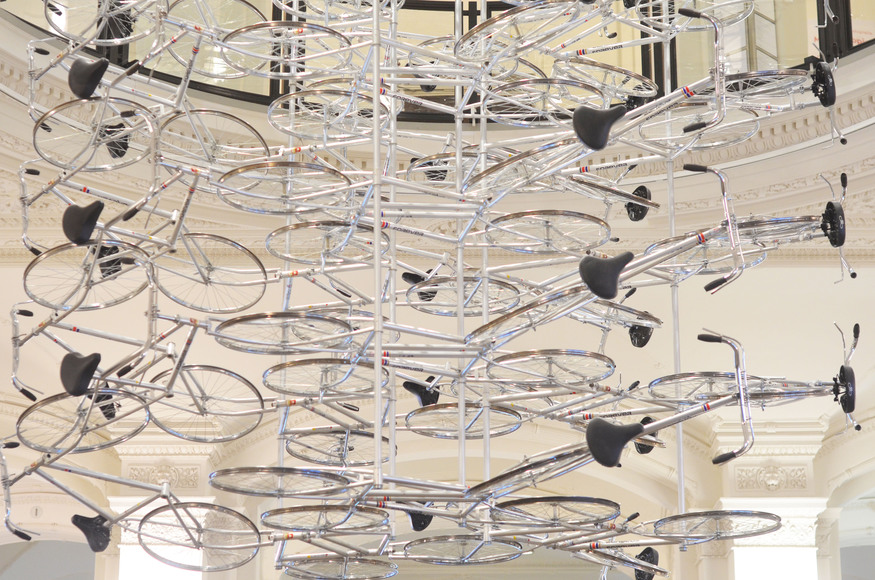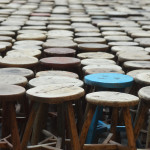
Ai WeiWei’s largest show to date is currently on display in Berlin. Consisting of 18 rooms at Martin-Gropius-Bau, “Evidence” is made up primarily of new work specifically created with the museum in mind. Much of the show is dedicated to the documentation and reflection of Ai’s experiences leading up to and during the 81 days that he spent forcibly and secretly detained by the Chinese Government on trumped up tax evasion charges.
Ai still remains a prisoner within China’s borders, unable to travel due to a confiscated passport. At the entrance of the exhibit, visitors can sign a petition for the return of Ai’s passport. It is still left to be seen whether or not he will be able to visit his current show in Berlin, which also happens to be his largest exhibit to date.

The exhibit is full of striking visual impressions: over 6,000 utilitarian stools that date back to the Ming and Qing dynasties; sculptures made from earthquake-salvaged rebar; a life sized prison cell replica; a room full of electronics previously confiscated by the Chinese government; a giant pile of tiny pastel pink and grey plastic crabs; a music video; lifesize projections of Beijing’s freeways and alleyways.
Visitors can tour a life-size replica of the cell the he lived in during his imprisonment, complete with closed-circuit video surveillance. Opposite the prison cell installation, Ai’s original music video (below) depicting his captivity plays on repeat. The informational text tells the viewer that the video’s goal is to both capture Ai’s experience as a prisoner and the fantasies of the guards.
Perhaps the most moving installation in the exhibit is dedicated to the 9,000 children who died in the earthquake in the Chinese province of Sichuan in 2008. In 2009, Ai covered the facade of Munich’s Haus Der Kunst with 9,000 backpacks, each representing a child lost in the rubble of the quake. The backpacks spelled out a phrase in Chinese characters, “For seven years she lived happily on this earth” – a quote from a parent who lost her daughter in the rubble of quake.
Five years later, Ai continues to mourn the loss of these innocent lives. In a short documentary on display at the Berlin show, viewers learn about the citizens investigation that Ai and his collaborators spearheaded in Sichuan. As it turns out, the massive loss of life in Sichuan schools was largely due to faulty construction – specifically, misplaced and unanchored rebar. Ai later located and purchased this rebar from a scrap yard to use in the exhibit at Martin-Gropius-Bau.

What is clear about walking through the 18 rooms at the museum is the direct nature of the work. There is no question that the artist has an agenda and wants his viewers to take a hard look at the details of his story. The haze often present in contemporary art is evaporated. What remains is art rooted in a brilliantly contemporary aesthetic, while deeply concerned with educating and challenging assumptions and facilitating radical change in China.
Ai Wei Wei’s exhibit is on exhibit from April 3rd- July 13th, 2014 at Martin-Gropius-Bau in Berlin.







